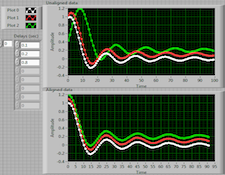It’s the time of year for saving money!
Whenever there’s any kind of “initiative” there’s usually some pushback against it. Take the “High Resolution Initiative” for instance – since Sony rolled out that idea I’ve seen several on-line demonstrations of why we audiophiles don’t need or don’t want higher resolution files. So far they have all been bull.
 The main problem with most of the demo files for tests that I’ve heard is the source material isn’t good enough – even if the test file began life as a high-resolution recording! Subtle spatial cues that give our aural apparatus the necessary information to discern whether a file has higher resolution are lost the minute you begin adding more than one pair of microphones to the mix. When a recording is no longer phase coherent and phase correct, it contains conflicting spatial information that confuses the ear/brain regardless of the resolution of the file.
The main problem with most of the demo files for tests that I’ve heard is the source material isn’t good enough – even if the test file began life as a high-resolution recording! Subtle spatial cues that give our aural apparatus the necessary information to discern whether a file has higher resolution are lost the minute you begin adding more than one pair of microphones to the mix. When a recording is no longer phase coherent and phase correct, it contains conflicting spatial information that confuses the ear/brain regardless of the resolution of the file.
For a proper listening test you need to use recordings that are phase-correct. Going into a DAW and merely time-aligning the transient peaks does not make a multi-miked recording phase-coherent – that’s only a sonic band aid that makes multi-miked music listenable, but not phase-correct – the tails of notes and reverberant fields are still different for each microphone that is in a different location than the main pair.
 Now, since most recordings ARE multi-miked, and the majority of music listeners use mediocre playback devices, it’s easy to see how anyone who thinks that MP3s are “good enough” could put together a “convincing” demo that would show that listeners can’t hear a difference. One demo on-line used an ancient Jackson Five cut (they last recorded under the “Jackson 5” name in 1976) for their high rez versus MP3 comparisons. But such tests really only show that under less than ideal circumstances, with less than ideal playback material, listeners can’t reliably tell the difference between 44.1 and 320KBPS MP3 files. And in an unlit coal cellar you can’t tell the difference between a white cat and a black cat – that doesn’t mean they are the same color.
Now, since most recordings ARE multi-miked, and the majority of music listeners use mediocre playback devices, it’s easy to see how anyone who thinks that MP3s are “good enough” could put together a “convincing” demo that would show that listeners can’t hear a difference. One demo on-line used an ancient Jackson Five cut (they last recorded under the “Jackson 5” name in 1976) for their high rez versus MP3 comparisons. But such tests really only show that under less than ideal circumstances, with less than ideal playback material, listeners can’t reliably tell the difference between 44.1 and 320KBPS MP3 files. And in an unlit coal cellar you can’t tell the difference between a white cat and a black cat – that doesn’t mean they are the same color.
So, the next time you take a test that purports to demonstrate that something can or can’t be heard look carefully at the way the source material was recorded. Some tests are not worth taking because if the source material is simply not good enough, and the results from such tests will always be useless.
What I recommend, if you want to do an A/B of different resolutions is to make your own test samples from a true high-resolution source, such as something from 2L, MA Recordings, or Blue Coast Records, and then use AudioGate or Audacity to make your downsampled versions. This way you can be sure that the sources are good enough that you actually might be able to hear a difference.





